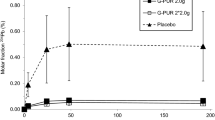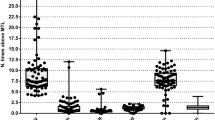Abstract
The US Food and Drug Administration (FDA) has conducted the Total Diet Study (TDS) since 1961, which designed to monitor the US food supply for chemical contaminants, nutritional elements, and toxic elements. Recently, perchlorate was analyzed in TDS samples. Perchlorate is used as an oxidizing agent in rocket propellant, is found in other items (e.g., explosives, road flares, fireworks, and car airbags), occurs naturally in some fertilizers, and may be generated under certain climatic conditions. It has been detected in surface and groundwater and in food. Perchlorate at high (e.g., pharmacological) doses can interfere with iodide uptake into the thyroid gland, disrupting its function. The National Academy of Sciences (NAS) has identified that “the fetuses of pregnant women who might have hypothyroidism or iodide deficiency as the most sensitive population.” This study reports on intake estimates of perchlorate and iodine, a precursor to iodide, using the analytical results from the TDS. Estimated average perchlorate and iodine daily intakes as well as the contribution of specific food groups to total intakes were estimated for 14 age/sex subgroups of the US population. The estimated smallest lower bound to the largest upper bound average perchlorate intakes by the 14 age/sex groups range from 0.08 to 0.39 micrograms per kilogram body weight per day (μg/kg bw/day), compared with the US Environmental Protection Agency (EPA) reference dose (RfD) of 0.7 μg/kg bw/day. Infants and children demonstrated the highest estimated intakes of perchlorate on a body weight basis. The estimated average iodine intakes by the 14 age/sex groups reveal a lower bound (ND=0) and upper bound (ND=LOD) range of average intakes from 138 to 353 μg/person/day. Estimated iodine intakes by infants 6–11 months exceed their adequate intake (AI), and intakes by children and adult age/sex groups exceed their relevant estimated average requirement (EAR).
This is a preview of subscription content, access via your institution
Access options
Subscribe to this journal
Receive 6 print issues and online access
$259.00 per year
only $43.17 per issue
Buy this article
- Purchase on Springer Link
- Instant access to full article PDF
Prices may be subject to local taxes which are calculated during checkout
Similar content being viewed by others
References
Blount B.C., Pirkle J.L., Osterloh J.D., Valentin-Blasini L., and Caldwell K.L. Urinary perchlorate and thyroid hormone levels in adolescent men and women living in the United States. Environ Health Perspect 2006: 114(12): 1865–1871.
Blount B.C., Valentin-Blasini L., Osterloh J.D., Mauldin J.P., and Pirkle J.L. Perchlorate exposure of the US population, 2001–2002. J Expo Sci Environ Epidemiol 2007: 17: 400–407.
Dasgupta P.K., Dyke J.V., Kirk A.B., and Jackson W.A. Perchlorate in the United States. Analysis of relative source contributions to the food chain. Environ Sci Technol 2006: 40(21): 6608–6614.
Egan S.K., Bolger P.M., and Carrington C.D. Update of US FDA's Total Diet Study food list and diets. J Expo Sci Environ Epidemiol 2007: 17: 573–582.
Fischer P.W.F., L'Abbe M.R., and Giroux A. Colorimetric determination of total iodine in foods by iodide-catalyzed reduction of Ce+4. J Assoc Off Anal Chem 1986: 69(4): 687–689.
Food and Drug Administration (FDA). Preliminary estimation of perchlorate dietary exposure based on FDA 2004/2005 exploratory data. May 2007: http://www.cfsan.fda.gov/~dms/clo4ee.html.
Greer M.A., Goodman G., Pleus R.C., and Greer S.E. Health effects assessment for environmental perchlorate contamination: the dose response for inhibition of thyroidal radioiodine uptake in humans. Environ Health Perspect 2002: 110(9): 927–937.
Jackson W.A., Joseph P., Laxman P., Tan K., Smith P.N., Yu L., and Anderson T.A. Perchlorate accumulation in forage and edible vegetation. J Agric Food Chem 2005: 53: 369–373.
Kirk A.B., Martinelango P.K., Dutta A., Smith E.E., and Dasgupta P.K. Perchlorate and iodide in dairy and breast milk. Environ Sci Technol 2005: 39: 2011–2017.
Krynitsky A.J., Niemann R.A., Williams A.D., and Hopper M.L. Streamlined sample preparation procedure for determination of perchlorate anion in foods by ion chromatography–tandem mass spectrometry. Analytica Chimica Acta 2006: 567: 94–99.
National Academy of Sciences. Dietary Reference Intake for Vitamin A, Vitamin K, Arsenic, Boron, Chromium, Copper, Iodine, Iron, Manganese, Molybdenum, Nickel, Silicon, Vanadium, and Zinc. National Academies Press, Washington, D.C., 2000.
National Academy of Sciences. Health Implications of Perchlorate Ingestion. National Academies Press, Washington, D.C., 2005.
Pearce E., Pino S., He X., Bazrafshan H.R., Lee S.L., and Braverman L.E. Sources of dietary iodine: bread, cows' milk, and infant formula in the Boston area. J Clin Endocrinol Metab 2004: 89(7): 3421–3424.
Pennington J.A.T., Capar S.G., Parfitt C.H., and Edwards C.W. History of the Food and Drug Administration's Total Diet Study (Part II), 1987–1993. J AOAC Int 1996: 79(1): 163–170.
Pennington J.A.T., and Gunderson E.L. History of the Food and Drug Administration's total diet study — 1961 to 1987. J Assoc Off Anal Chem 1987: 70(5): 772–782.
Sanchez C.A., Crump K.S., Krieger R.I., Khandaker N.R., and Gibbs J.P. Perchlorate and nitrate in leafy vegetables of North America. Environ Sci Technol 2005a: 39: 9391–9397.
Sanchez C.A., Krieger R.I., Khandaker N., Moore R.C., Holts K.C., and Neidel L.L. Accumulation and perchlorate exposure potential of lettuce produced in the Lower Colorado River region. J Agric Food Chem 2005b: 53: 5479–5486.
Sanchez C.A., Krieger R.I., Khandaker N.R., Valentin-Blasini L., and Blount B.C. Potential perchlorate exposure from Citrus sp. irrigated with contaminated water. Analytica Chimica Acta 2006: 57: 33–38.
World Health Organization (WHO). Iodine Status Worldwide, WHO Global Database on Iodine Deficiency. Department of Nutrition for Health and Development, World Health Organization, Geneva, 2004.
Acknowledgements
The Total Diet Study is a collaborative effort of FDA's Center for Food Safety and Applied Nutrition (CFSAN) and FDA's district offices and laboratories. Finally, the authors of this work do not have any involvement, financial, or otherwise, that might potentially bias their work.
Author information
Authors and Affiliations
Corresponding author
Rights and permissions
About this article
Cite this article
Murray, C., Egan, S., Kim, H. et al. US Food and Drug Administration's Total Diet Study: Dietary intake of perchlorate and iodine. J Expo Sci Environ Epidemiol 18, 571–580 (2008). https://doi.org/10.1038/sj.jes.7500648
Received:
Accepted:
Published:
Issue Date:
DOI: https://doi.org/10.1038/sj.jes.7500648
Keywords
This article is cited by
-
Bacteriophages: an overview of the control strategies against phytopathogens
Egyptian Journal of Biological Pest Control (2023)
-
Perspectives from the Society for Pediatric Research: contaminants of water and children’s health: Can we do better?
Pediatric Research (2020)
-
A Review of Iodine Status of Women of Reproductive Age in the USA
Biological Trace Element Research (2019)
-
Update on dietary intake of perchlorate and iodine from U.S. food and drug administration’s total diet study: 2008–2012
Journal of Exposure Science & Environmental Epidemiology (2018)
-
Seasonal Variation and Exposure Risks of Perchlorate in Soil, Indoor Dust, and Outdoor Dust in China
Archives of Environmental Contamination and Toxicology (2018)



